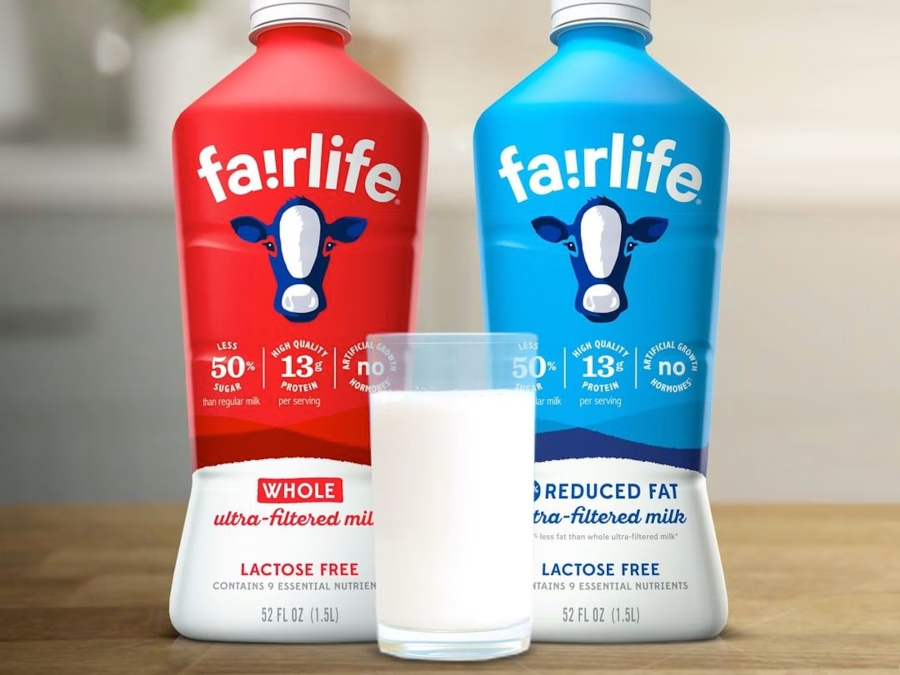Find out whether Jersey or Holstein cows are more profitable for farmers. Learn about differences in milk production, feed efficiency, and costs to help make a smart decision.
Have you ever wondered why specific dairy farms succeed while others fail? The breed of cow you pick greatly influences your farm’s profitability. This article delves into the profitability of Jersey and Holstein cows, equipping you with the knowledge to make informed investment choices. Understanding milk output, feed efficiency, and total expenses is crucial in choosing the breed that will benefit your bottom line. With rising feed prices and growing environmental concerns, selecting the correct cow breed is more important than ever. Join us as we compare Jersey and Holstein cows regarding milk output and income, feed efficiency and cost, environmental sustainability, and breed transition. By the end, you’ll understand the factors influencing dairy farm profitability and know which breed generates the most profits.
Holsteins: Pioneers of Dairy Profitability Through Superior Milk and Component Production
| Breed | Annual Milk Production (lbs) | Component Production (lbs) | Annual Revenue ($) |
|---|---|---|---|
| Holstein | 25,000 | 1,500 | 4560 |
| Jersey | 18,000 | 1,200 | 4104 |
The economic advantage of Holsteins stems from their more excellent milk and component output. Holsteins reduce fixed costs by producing more milk and critical components such as fat and protein, increasing overall income. Their large component output, around 810 extra pounds annually, generates a substantial financial boost, resulting in approximately $456 more per cow yearly than Jerseys. This significant difference makes Holsteins the favored option in commercial dairy businesses that want to maximize milk supply and component volume for economic success.
Maximizing Revenue through Higher Milk and Component Output
Holsteins’ increased milk output per cow contributes significantly to their profitability by lowering fixed production costs. Holsteins may spread out expenditures such as housing, labor, and equipment usage by generating more significant quantities of milk and milk components across a lactation period, which do not vary much with the amount of milk produced. This cost dilution implies that the per-unit cost of milk production falls as output rises, allowing for more significant margins and overall income. As a result, the higher yield per cow covers fixed expenditures more effectively and increases total profitability, providing Holsteins a considerable economic edge over other breeds.
Bridging the Profitability Gap: Enhancing Jersey Milk Production for Competitive Advantage
Although Holsteins now have a significant economic advantage, Jerseys have the potential to close the gap via focused improvements in their milk production capacity. Increasing Jerseys’ daily milk supply from 60 to 70 pounds while retaining high component concentrations is a possible technique for bringing their profitability in line with that of Holsteins. Furthermore, Jerseys’ inherent efficiency as feed converters—producing 1.75 pounds of energy-corrected milk per pound of dry matter—shows that they may increase milk production without raising feed expenditures. With an emphasis on selective breeding and optimum nutrition, Jerseys have the potential to meet, if not exceed, Holstein earnings.
Comparative Feed Efficiency: The Subtle Edge of Jerseys in Dairy Sustainability
| Breed | Feed Efficiency (lbs of Energy-Corrected Milk per lb of Dry Matter Consumed) | Feed Cost per lb of Fat ($) |
|---|---|---|
| Jersey | 1.75 | 1.82 |
| Holstein | 1.67 | 1.97 |
When comparing feed efficiency between Jersey and Holstein cows, it is clear that Jerseys have a slight edge. Jersey cows produce around 1.75 pounds of energy-corrected milk per pound of dry matter ingested, whereas Holsteins produce roughly 1.67 pounds. Energy-corrected milk is a measure that accounts for the energy content of the milk, providing a more accurate comparison of feed efficiency. This marginal efficiency advantage means that Jersey cows produce more milk from the same amount of feed. As a result, although producing less milk in total volume, Jersey’s greater feed conversion rate may significantly improve cost-effectiveness and overall sustainability in dairy operations.
Economic Edge: Leveraging Lower Feed Costs of Jerseys for Enhanced Dairy Profitability
Since feed costs account for a considerable amount of overall dairy production expenses, Jerseys’ reduced feed cost per pound of fat is a significant benefit. Jerseys had a feed cost of $1.82 per pound of fat against $1.97 for Holsteins. Although this difference may look tiny, it adds up over time, resulting in significant savings. For farms producing substantial milk, cumulative feed cost savings might result in considerable financial gains. This reduced feed cost boosts profitability per cow. It improves total herd profitability, establishing Jersey cows as a cost-effective alternative for dairy producers looking to reduce expenditures without losing output.
Environmental Efficiency and Sustainability: The Jersey Advantage
| Resource Utilization | Jersey | Holstein |
|---|---|---|
| Water Usage | 32% less | Standard |
| Land Usage | 11% less | Standard |
| Fossil Fuel Consumption | 21% less | Standard |
| Greenhouse Gas Emissions | Lower | Higher |
Incorporating Jerseys into dairy production may have tremendous environmental advantages. The dairy industry is increasingly focusing on resource management and reducing environmental impact. According to research, Jerseys use 32% less water, 11% less land, and 21% less fossil fuels to achieve the same output as Holsteins. This efficiency leads to a lesser environmental imprint. Furthermore, Jerseys emit fewer greenhouse gasses per unit of milk, making them suitable for farmers who prioritize sustainability. According to studies, it would take 109 Jersey cows to produce the same amount of cheese as 100 Holstein cows, but with 80% less greenhouse gas emissions and fewer resource needs. This trend in the dairy industry provides a strategic advantage for profitability and sustainability.
Efficiency-Driven Dairy Farming: The Role of Jersey-Hybrids in Modern Operations
Modern dairies increasingly concentrate on improving efficiency and feed conversion to increase profitability. This tendency influences breed selection since efficient feed-to-milk conversion lowers operating costs and improves sustainability. Jerseys, for example, excel in feed conversion, producing 1.75 pounds of energy-corrected milk per pound of dry matter, compared to Holsteins’ 1.67 pounds. This advantage enables better returns on feed investments, making Jerseys an attractive alternative when feed prices increase.
Furthermore, the emphasis on efficiency has sparked interest in crossbreeding projects combining the qualities of both breeds. Crossbreeding Holsteins with Jerseys allows you to combine Holsteins’ high milk volume with Jerseys’ remarkable feed efficiency and environmental advantages. However, it’s important to note that crossbreeding projects also come with challenges, such as the need for careful genetic selection and management. Dairy producers increasingly utilize genetic data and performance measures to identify the most productive and sustainable breed combinations.
As the dairy business shifts toward leaner production practices, breed selection becomes more critical. Producers will use data-driven insights and genetic improvements to choose breeds that optimize milk yield while maintaining excellent feed conversion rates and a reduced environmental impact, satisfying profitability and sustainability objectives.
Strategic Breed Selection: Data-Driven Decisions for a Sustainable Future
Transitioning from Holsteins to Jerseys may be attractive owing to environmental advantages and improved feed efficiency. However, the situation is more complicated. Dairy farms contain infrastructure such as milking parlors and accessible stalls mainly intended for Holstein cattle. Retrofitting existing facilities to accommodate more miniature Jersey cows might be expensive, hurting profitability during the shift.
Holsteins produce more milk and components, making greater use of fixed expenditures like land, labor, and infrastructure. Each Holstein cow makes more money than a Jersey cow in the same area, resulting in increased profitability under the current structure. While Jerseys have their advantages, the economic consequences of switching breeds must be carefully considered.
Optimizing Fixed Costs: Holsteins’ Superiority in Facility Utilization Enhances Dairy Profitability
Holstein cows considerably improve dairy farm economics by increasing milk and component yields, resulting in more excellent cash per cow. By producing more milk, Holsteins distribute fixed production expenditures such as housing, milking equipment, and upkeep across a broader output. This reduces overhead costs per milk unit, increasing total profitability without further infrastructure expenditures. In facilities constructed for Holsteins, these cows maintain an economic advantage, making the switch to Jerseys less economically viable owing to decreased income per stall.
The Bottom Line
The decision between Jersey and Holstein cows is crucial to dairy production success. This comparison demonstrates Holsteins’ present income advantage owing to increased milk output and component yields. Jerseys, noted for their feed efficiency and sustainability, have a significant potential to close the profitability gap via focused productivity increases. Farmers should assess these elements against their individual requirements and operational setups. Ultimately, deliberate breed selection may result in increased profitability and environmental efficiency. Consider your conditions and make educated decisions to maximize the profitability of your dairy farm.
Key Takeaways:
- Holstein cows generate approximately $456 more profit per cow annually compared to Jersey cows.
- Holsteins achieve higher profitability primarily due to producing an additional 810 pounds of components per year.
- Jersey cows demonstrate superior feed efficiency, converting 1.75 pounds of energy-corrected milk per pound of dry matter consumed compared to Holsteins’ 1.67 pounds.
- The feed cost per pound of fat is lower for Jerseys at $1.82, versus $1.97 for Holsteins, contributing to their cost-effectiveness.
- Jerseys are more environmentally sustainable, requiring less body mass, reducing greenhouse gas emissions, and needing less water and land for equal cheese production.
- Transitioning facilities from Holstein to Jersey cows is generally not cost-effective due to infrastructure and fixed cost considerations designed for Holsteins.
- Targeted productivity improvements in Jerseys can potentially bridge the profitability gap with Holsteins, making them equally viable for dairy operations.
Summary:
The article compares the profitability of Jersey and Holstein cows, focusing on milk output, feed efficiency, and total expenses. Holsteins have a significant economic advantage due to their superior milk and component output, reducing fixed costs and resulting in a $456 per cow yearly increase. Jerseys can bridge this gap by improving milk production capacity and efficiency as feed converters, producing 1.75 pounds of energy-corrected milk per pound of dry matter. They also have a slight edge in dairy sustainability, producing around 1.75 pounds of energy-corrected milk per pound of dry matter ingested. The Jersey breed also offers significant environmental advantages, using 32% less water, 11% less land, and 21% less fossil fuels to achieve the same output, making them suitable for farmers focusing on sustainability.












![7733001[1]](https://www.thebullvine.com/wp-content/uploads/2014/05/77330011.jpg)







